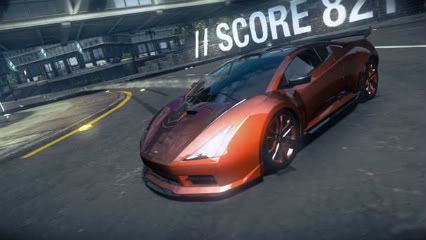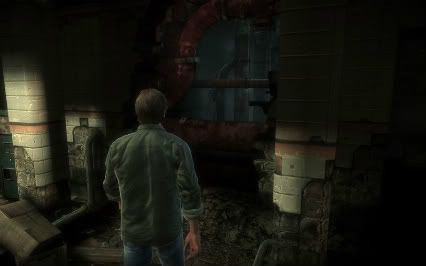
Yes, it’s coming up to a month since 2011′s Eurogamer Expo closed its doors for the last time; so just as well this is the last I’ll be writing about it. Our coverage this year isn’t quite as comprehensive as the last two years, and this is because (a) I braved the expo alone this year, and (b) Matt’s already given us some great previews from TGS. Find his coverage here.
All that’s left is to give some brief impressions of the few games I had time to play that I haven’t already covered. I shan’t bother with Battlefield 3, not least because almost identical code has been made available as public beta (though the expo build seemed to be missing all the glitches). Not to mention the fact that the game has gone gold, and will be hitting retail in a few short weeks. Let’s start with something I was actually rather optimistic about; Ridge Racer Unbounded.
Ridge Racer 7 was one of the first games I got for my PS3. I loved it; I spent hours trying to work my way through the wealth of unlockables offline, and hours more competing online. It was simple, incredibly unrealistic arcade racing – and all the better for it. It was with these memories in mind that I approached a vacant Unbounded pod. Two races later, two things were clear to me. 1) Somebody somewhere had said ‘make it like Burnout’, and 2) I won’t be buying it.
 I don’t dislike Burnout. In fact I’ve been a fan since the original, and I’ve bought and enjoyed almost every title since. A Burnout game that tried to be like Ridge Racer wouldn’t work… much in the way that a Ridge Racer game trying to be like Burnout doesn’t work. It looked very pretty, and the Splinter Cell Conviction-style plastering of messages on the scenery worked well. The new vehicle destruction and emphasis thereof is horridly out of place in the series, however. I certainly hope that you can turn off the close-ups of smashed rivals; they bring the flow of the race to a shuddering halt, and one caused me to smash into a corner as soon as the animation had finished. Swapping nitros for a boost meter saps Ridge Racer of its identity still further.
I don’t dislike Burnout. In fact I’ve been a fan since the original, and I’ve bought and enjoyed almost every title since. A Burnout game that tried to be like Ridge Racer wouldn’t work… much in the way that a Ridge Racer game trying to be like Burnout doesn’t work. It looked very pretty, and the Splinter Cell Conviction-style plastering of messages on the scenery worked well. The new vehicle destruction and emphasis thereof is horridly out of place in the series, however. I certainly hope that you can turn off the close-ups of smashed rivals; they bring the flow of the race to a shuddering halt, and one caused me to smash into a corner as soon as the animation had finished. Swapping nitros for a boost meter saps Ridge Racer of its identity still further.
Worst of all, they’ve violated the handling. It’s now stuck in a boggy middle ground between ‘proper’ Ride Racer’s carefree powerslides and a more realistic attempt. I didn’t play any of the games mentioned here long enough to pass fair judgement, and this is no exception. First impressions matter though – and mine were not favourable.
I also got to play Inversion, a title that I personally knew next to nothing about before the expo. Turns out it’s a third person shooter with a cover system, nice graphics, destructible scenery, and a buddy who fights alongside you (there’s to be co-op too). There was a big dollop of gore, which earned it a place in the over 18s area. Topped off with a sci-fi icing, it all felt somewhat Gears of War. So far, so generic.
This is a game with promise, though. The main hook here, which is clearly the reason behind the name, is the messing around with gravity. This manifests itself mainly in your character’s ability to shoot some kind of pulse from his arm which levitates objects – or enemies – for a short period of time. Gimmicky it may be, but certainly useful when you’re being rushed by a group or – best of all – when you need to expose enemies who have dug in behind cover. Foes armed with guns won’t just flail around helplessly, either; they’ll continue shooting at you while in mid-air.
 Another interesting idea was the introduction of certain points where, basically, enemies walk around on the wall or the ceiling. The gravity (for reasons not explained in the demo) suddenly alters in these areas, making for unexpected – and initially disorientating – firefights. Get close enough to the border of one of these areas and, at a designated point, you can jump into the new gravity field and continue as normal.
Another interesting idea was the introduction of certain points where, basically, enemies walk around on the wall or the ceiling. The gravity (for reasons not explained in the demo) suddenly alters in these areas, making for unexpected – and initially disorientating – firefights. Get close enough to the border of one of these areas and, at a designated point, you can jump into the new gravity field and continue as normal.
The main problem is the strict-as-a-hated-teacher scripting of most of the gravity exploitation. Flipping to the new wall/ceiling/platform in the aforementioned gravity twisting areas can only be done in the exact spot the game tells you to; and lifting debris out of the way in one section may as well have been replaced by an automatic door. The weapons on offer were pretty unremarkable too, but this could still prove to be one to watch.
Finally, I eventually managed to get a chance to play the Silent Hill: Downpour demo. As you can probably imagine, a demo didn’t tell me very much; it basically consisted of a fairly simple divert-the-water-flow puzzle, lots of dark, two monsters… and that was about it.
 I can tell you that the graphics were very good, even if it seems set to be yet another game that turns the intensity of the dark sections to ‘unreasonable’ (even the expensive TVs used at the expo struggled to define detail in the very darkest moments). The hero also looked constipated. I imagine the designers were going for ‘nervous’ or ‘scared’, but they definitely got ‘constipated’.
I can tell you that the graphics were very good, even if it seems set to be yet another game that turns the intensity of the dark sections to ‘unreasonable’ (even the expensive TVs used at the expo struggled to define detail in the very darkest moments). The hero also looked constipated. I imagine the designers were going for ‘nervous’ or ‘scared’, but they definitely got ‘constipated’.
The detailed graphics, combined with the nearly-over-the-shoulder perspective, gave it something of a Resident Evil 4/5 feel. This was however dampened somewhat by the s-l-o-w movement of your character, the result of which was always closer to frustration than tension. Although one of the loading screens advised us that it was sometimes better to run rather than fight – hinting at a return to the style of the first games – the environment seemed to contradict this.
Again, it was a fairly brief demo, contained within a small area. However, the game seemed determined to offer the player more weapons than they could possibly have need for – including a pick, an axe, and a chair. Anything you use as a weapon degrades with use but, again, there were only two enemies in the demo (and they both went down without much trouble, using the same weapon for both). It put me a little in mind of the criminally ignored Condemned. Impossible to tell how this will pan out across the whole game, but I definitely wanted to play beyond what was on offer.
And that, ladies and gentlemen, is that for Eurogamer Expo 2011. See ya next year, Eurogamer Expo coverage fans!

















Comments